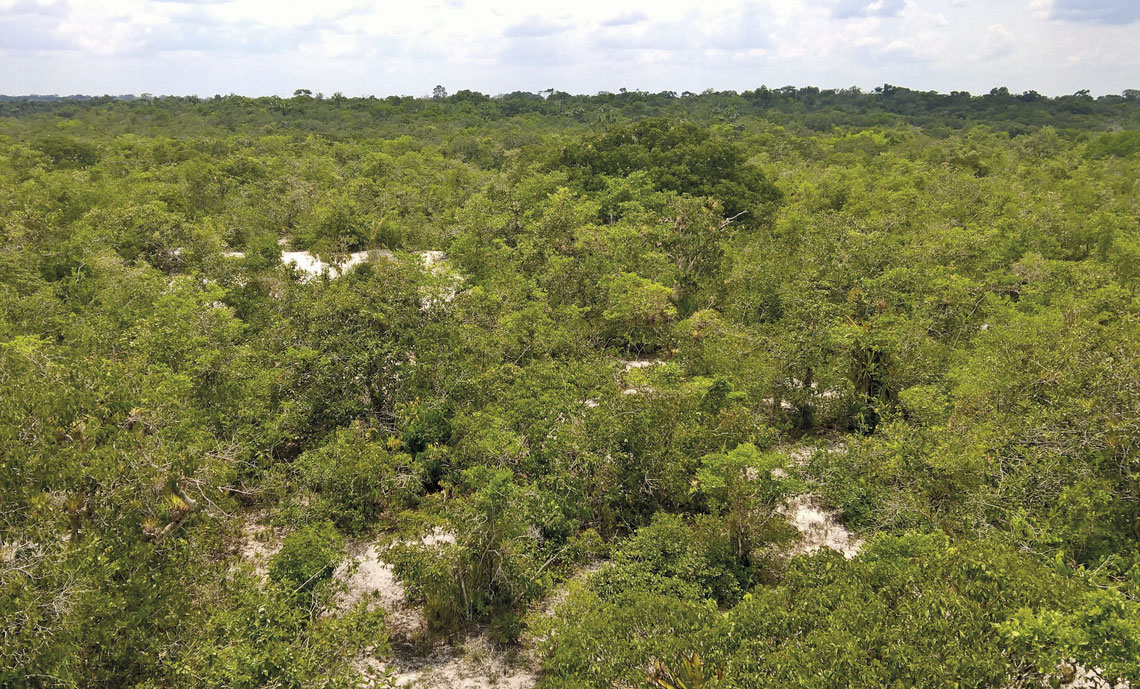
Viviane KleinCampinaranas like this one in São Sebastião do Uatumã, Amazonas, are home to unique plant communitiesViviane Klein
Among the trees of the Amazon, isolated sandy ecosystems known as campinaranas are home to unique communities of plants, many of which are epiphytes (meaning they grow on other plants) that offer a splash of color amidst the greenery. Viviane Klein and other botanists from Brazil’s National Institute of Amazonian Research (INPA) and National Atlantic Forest Institute (INMA) examined five of these areas near Manaus — the largest of which was four square kilometers — to identify the epiphytes and understand why they occupy these spaces. The team recorded 118 species of epiphytes, predominantly orchids (62 species), especially of the genus Epidendrum, which produces yellow, red, or violet flowers (11 species), and bromeliads (12), such as those of the genus Aechmea (7). The researchers that carried out the field research believe the diversity and composition of the plant groups is linked to the size of each area and the distance between them — those closest together share more species in common. The study also highlighted current risks to biodiversity caused by environmental impacts such as fires, sand removal, and urban expansion, reinforcing the need for more effective protection. Campinaranas represent around 5% of the area of the Amazon covered by native vegetation (Brazilian Journal of Botany, March).

Viviane KleinEpiphytes on branches (to the left) and two orchids, Encyclia mapuerae and Sobralia sessilisViviane Klein